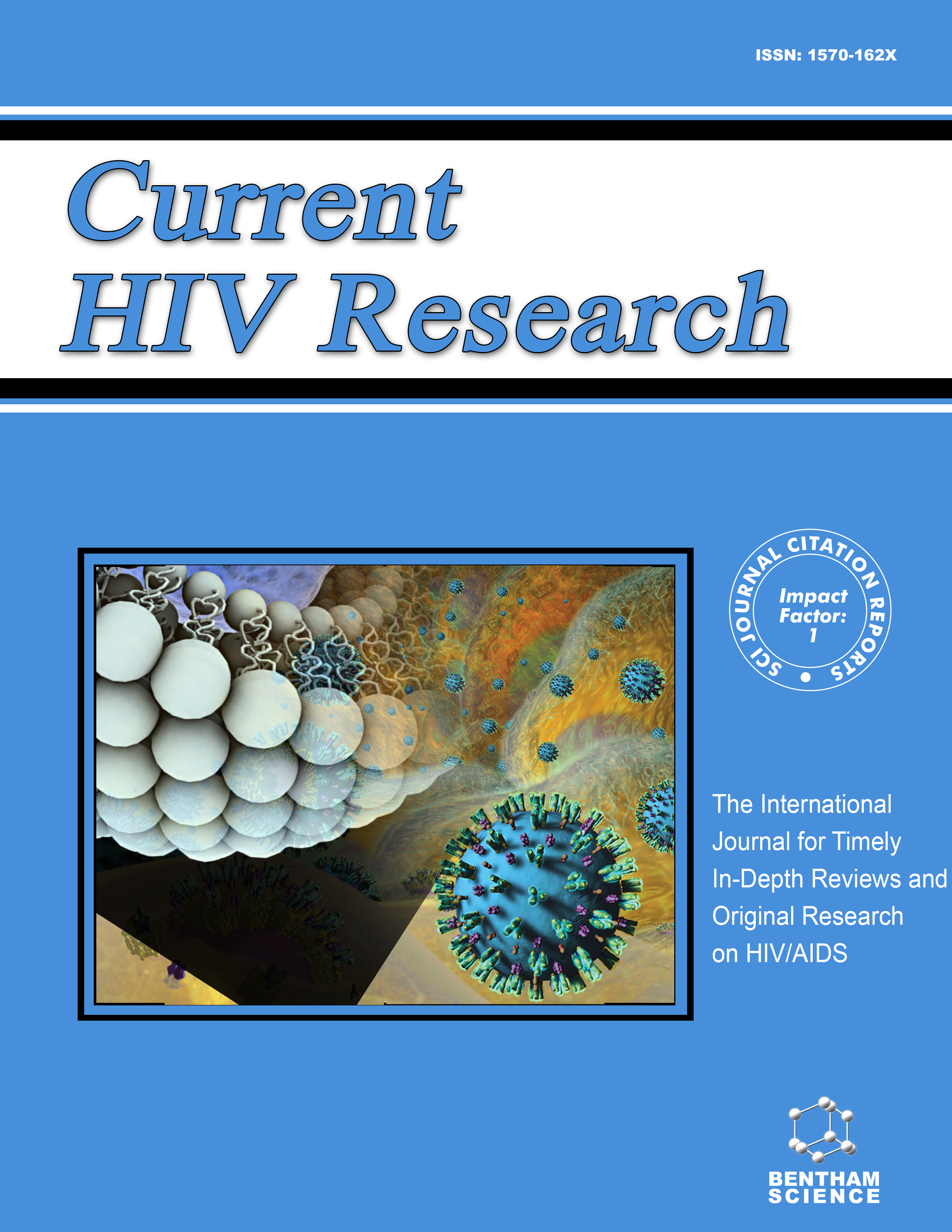- Home
- A-Z Publications
- Current HIV Research
- Previous Issues
- Volume 1, Issue 4, 2003
Current HIV Research - Volume 1, Issue 4, 2003
Volume 1, Issue 4, 2003
-
-
Neuroprotective Therapy for HIV Dementia
More LessAuthors: Jadwiga Turchan, Ned Sacktor, Valerie Wojna, Katherine Conant and Avi NathDespite the development and use of effective antiretroviral therapy, HIV dementia persists and has important socio-economic consequences. Significant progress has been made in our current understanding of the neuropathogenesis of HIV infection, and it is clear that adjunctive neuroprotective therapy in addition to antiretroviral therapy are necessary for prevention and treatment of this entity. In this manuscript Read More
-
-
-
Is HIV Involved in the Pathogenesis of Non-Infectious Pulmonary Complications in Infected Patients?
More LessAuthors: Georgette D. Kanmogne, Ronald C. Kennedy and Paula GrammasPulmonary complications of AIDS are one of the major causes of morbidity and mortality in HIVinfected individuals, and are often direct indicators of enhanced progression to an AIDS-defining illness. HIV can be detected in the lung during asymptomatic disease, as well as during the advanced stages of AIDS. With prolonged survival of HIV-infected patients, non-infectious pulmonary complications are becoming more common a Read More
-
-
-
Regulation of TAK / P-TEFb in CD4+ T Lymphocytes and Macrophages
More LessAuthors: Andrew P. Rice and Christine H. HerrmannHIV replication occurs principally in activated CD4+ T cells and macrophages. The HIV-1 Tat protein is essential for HIV replication and requires a cellular protein kinase activity termed TAK / P-TEFb, composed of CDK9 and cyclin T1, for its transactivation function. This article reviews recent work indicating that under some circumstances TAK / P-TEFb is likely to be limiting for HIV replication in CD4+ T cells and macrophages, Read More
-
-
-
Role of FAS in HIV Infection
More LessDirect cytopathic effects cannot explain the massive CD4+ T cell depletion in acquired immunodeficiency syndrome (AIDS) patients and several indirect mechanisms may be involved. A role has been proposed for apoptosis of uninfected lymphocytes, since lymphocytes from human immunodeficiency virus-1+ (HIV-1) individuals display increased levels of spontaneous apoptosis. This process may be ascribed in part t Read More
-
-
-
HIV-1 Vectors: Fulfillment of Expectations, Further Advancements, and Still A Way To Go
More LessAuthors: Adam S. Cockrell and Tal KafriThe ability of lentiviral vectors to transduce and stably integrate their genomes into non-dividing cells was the major reason for the development of the HIV-1 based vector gene delivery system. The first VSVG pseudotyped lentiviral vectors fulfilled these expectations by ferrying large genetic payloads to nondividing cells in vitro and in vivo. Here we discuss advances in HIV-1 vector systems which lead to improvement in biosaf Read More
-
-
-
Use of Fusion Proteins and Procaryotic Display Systems for Delivery of HIV-1 Antigens: Development of Novel Vaccines for HIV-1 Infection
More LessTwo non-pathogenic scaffolds (represented by the filamentous bacteriophage fd and the dihydrolipoyl acetyltransferase E2 protein of the Bacillus stearothermophilus pyruvate dehydrogenase (PDH) complex) able to deliver human immunodeficiency virus (HIV)-1 antigenic determinants, were designed in our laboratories and investigated in controlled assay conditions. Based on a modification of the phage display technology, w Read More
-
-
-
Mother-to-Child Transmission of HIV Infection and its Prevention
More LessAuthors: Claire Thorne and Marie-Louise NewellAn estimated 800,000 children acquired HIV-infection in 2002, most as a result of mother-to-child transmission (MTCT), and vertically-acquired HIV infection continues to be of major public health importance. Prevention of MTCT is possible with a combination of interventions including antiretroviral therapy (ART) (usually in highly active combinations), elective caesarean section and avoidance of breastfeeding, and whe Read More
-
-
-
Astrocyte Infection by HIV-1: Mechanisms of Restricted Virus Replication, and Role in the Pathogenesis of HIV-1-Associated Dementia
More LessAstrocytes are the most numerous cell type in the brain, and their physiological roles are essential for normal brain function. Studies of post-mortem brain tissue samples from individuals with AIDS have revealed that a small proportion of astrocytes are infected by HIV-1 which is linked to the development of HIVassociated dementia (HIVD), a frequent clinical manifestation of HIV-1 disease affecting up to 20% of infected ad Read More
-
Volumes & issues
-
Volume 23 (2025)
-
Volume 22 (2024)
-
Volume 21 (2023)
-
Volume 20 (2022)
-
Volume 19 (2021)
-
Volume 18 (2020)
-
Volume 17 (2019)
-
Volume 16 (2018)
-
Volume 15 (2017)
-
Volume 14 (2016)
-
Volume 13 (2015)
-
Volume 12 (2014)
-
Volume 11 (2013)
-
Volume 10 (2012)
-
Volume 9 (2011)
-
Volume 8 (2010)
-
Volume 7 (2009)
-
Volume 6 (2008)
-
Volume 5 (2007)
-
Volume 4 (2006)
-
Volume 3 (2005)
-
Volume 2 (2004)
-
Volume 1 (2003)
Most Read This Month
Article
content/journals/chr
Journal
10
5
false
en


